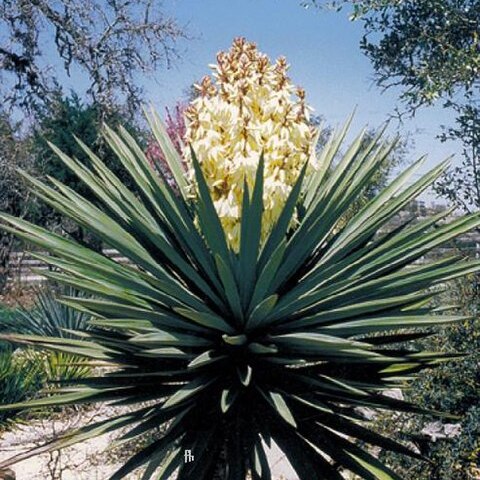Plants often forming colonies of rosettes, arborescent, to 7 m; rosettes with leaves hanging at various angles, giving an overall ragged appearance. Stems 1–8, occasionally 2–5-branched, 14–15 cm diam. Leaf blade erect, yellowish to bluish green, usually U-or V-shaped in cross section, thick, 36–128 × 1.6–7 cm, rigid, scabrous, margins entire, filiferous with straight, coarse fibers, light brown. Inflorescences erect, paniculate, arising mostly within rosettes, variable in shape, usually ovoid, 18 dm, glabrous, rarely slightly pubescent; peduncle scapelike, 0.3 m or longer. Flowers pendent; perianth globose; tepals distinct, cream-colored, occasionally tinged with purple, ovate, 2.7–8.1 × 1–3.4 cm, apex rounded or acute; filaments 1–2.7 cm, short-pubescent proximally; anthers 1–6 mm; pistil 1.5–3.5 × 0.5–1 cm; ovary 1.3–3.3 cm; style 2–8 mm; stigmas distinct. Fruits pendent, baccate, indehiscent, 4.4–18.7 × 1.8–4.6 cm, fleshy, succulent. Seeds black, 5–14 mm diam., 1–5 mm thick.
More
A shrub or small tree. It grows 3 m tall. The trunk is 13 cm across. The stem only branches near the top. The leaves are stiff and have a sharp point. They are strap like and 90 cm long by 7.5 cm wide. They are in large clumps at the ends of the stems or branches. The flowering shoots come from above the leaves and the flowers and whit or pale purple. The fruit is a capsule 10 cm long by 2.5 cm wide.


